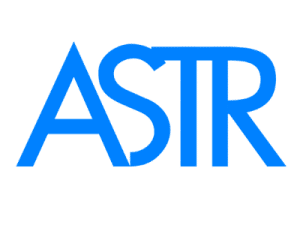Myofascial Pain vs. Fibromyalgia: What’s the Difference?
Myofascial Pain vs. Fibromyalgia: What’s the Difference?
Search terms: fibromyalgia vs myofascial pain, chronic pain causes, difference between myofascial pain and fibromyalgia
Chronic pain affects millions of people worldwide, yet many struggle to find answers or effective treatment. Two of the most commonly misunderstood pain conditions—Myofascial Pain Syndrome (MPS) and Fibromyalgia—are often confused due to their overlapping symptoms. However, they are distinct conditions with different causes, diagnostic criteria, and treatment strategies.
If you’ve been told you have chronic muscle pain, tender points, or widespread fatigue, it’s essential to understand the difference between these two conditions so you can pursue the right type of care.
✅ What Is Myofascial Pain Syndrome?
Myofascial Pain Syndrome (MPS) is a musculoskeletal condition characterized by trigger points—tight, sensitive knots in muscles that cause local and referred pain. These painful areas are typically caused by overuse, injury, poor posture, stress, or fascial restriction.
Key features of MPS include:
-
Localized pain that can radiate
-
Muscle stiffness or weakness
-
Trigger points that feel like hard nodules
-
Pain worsens with touch or movement
-
Limited range of motion in the affected area
MPS often develops in response to repetitive strain, trauma, or postural imbalances, and the pain is usually focal—affecting specific muscle groups rather than the whole body.
✅ What Is Fibromyalgia?
Fibromyalgia is a central nervous system disorder characterized by widespread musculoskeletal pain, fatigue, sleep disturbances, and cognitive dysfunction (often called “fibro fog”). Unlike MPS, fibromyalgia is not caused by localized muscle injury or trigger points—it stems from central sensitization, where the brain and spinal cord amplify pain signals.
Key features of fibromyalgia include:
-
Diffuse pain across multiple areas of the body
-
Persistent fatigue and unrefreshing sleep
-
Brain fog, memory issues, and mood changes
-
Sensitivity to touch, sound, light, or temperature
-
Often associated with IBS, anxiety, and depression
According to the American College of Rheumatology, fibromyalgia is diagnosed based on widespread pain lasting over three months, with no identifiable underlying physical cause like inflammation or trauma (Wolfe et al., 2010).
🔍 Key Differences: Fibromyalgia vs. Myofascial Pain
| Feature | Myofascial Pain Syndrome (MPS) | Fibromyalgia |
|---|---|---|
| Pain location | Localized, often in one or a few regions | Widespread across the entire body |
| Pain source | Trigger points in muscle and fascia | Central nervous system sensitization |
| Pain response | Sharp or aching pain with movement/pressure | Constant dull pain, often without clear triggers |
| Fatigue | Less common, usually mild | Very common and severe |
| Cognitive issues | Rare | Common (“fibro fog”) |
| Sleep disturbance | Less common | Very common |
| Associated conditions | Postural issues, localized injuries | IBS, migraines, depression, anxiety |
| Trigger points | Palpable, with referred pain | Tender points, but no clear trigger zones |
| Cause | Muscle overuse, injury, scar tissue | Central nervous system dysregulation |
🧪 Diagnosis: How Are They Identified?
-
Myofascial Pain Syndrome is diagnosed by physical examination, including identifying taut muscle bands and referred pain patterns. Ultrasound may help visualize fascial adhesions.
-
Fibromyalgia is a clinical diagnosis, based on patient history, symptom questionnaires, and ruling out other conditions. Blood tests are often used to exclude autoimmune or thyroid conditions, but no definitive test confirms fibromyalgia.
💡 Can You Have Both?
Yes. In fact, many patients with fibromyalgia also experience trigger points or localized myofascial pain. This overlap can complicate treatment and requires a careful, multi-system approach to address both central and peripheral causes of pain.
🔄 Treatment Differences
While both conditions benefit from a holistic approach, treatment strategies vary:
For Myofascial Pain Syndrome:
-
Trigger point therapy (manual or tool-assisted)
-
Myofascial release therapy
-
Postural correction and physical therapy
-
ASTR Tools for scar tissue and fascia release
-
Anti-inflammatory diet like the ASTR Diet
-
Stress reduction and movement-based therapy
For Fibromyalgia:
-
Nervous system regulation (vagus nerve stimulation, mindfulness, gentle movement)
-
Graded exercise therapy (low-impact activity)
-
Cognitive Behavioral Therapy (CBT)
-
Sleep support and pacing
-
Anti-inflammatory diet and gut healing protocols
-
Medications (in some cases) such as pregabalin or duloxetine
⚠️ Why Proper Diagnosis Matters
Mistaking fibromyalgia for myofascial pain—or vice versa—can lead to ineffective treatment. For example, deep manual therapy may aggravate fibromyalgia symptoms, while fibromyalgia-focused medication will not resolve localized trigger points. A correct diagnosis ensures targeted care, faster recovery, and less frustration.
Final Thoughts
Although fibromyalgia and myofascial pain syndrome can look similar on the surface, they are fundamentally different in origin and treatment. If you’re struggling with chronic pain, fatigue, or muscle tightness, working with a practitioner who understands both conditions is key.
With the right tools, therapy, and support, it’s possible to reduce symptoms and regain control over your body.
References
-
Wolfe, F., Clauw, D. J., Fitzcharles, M. A., et al. (2010). The American College of Rheumatology preliminary diagnostic criteria for fibromyalgia and measurement of symptom severity. Arthritis Care & Research, 62(5), 600–610.
-
Simons, D. G., Travell, J. G., & Simons, L. S. (1999). Travell & Simons’ Myofascial Pain and Dysfunction: The Trigger Point Manual.
-
Ge, H. Y., & Arendt-Nielsen, L. (2011). Latent myofascial trigger points. Current Pain and Headache Reports, 15(5), 386–392.
-
Gerwin, R. D. (2005). A review of myofascial pain and fibromyalgia—factors that promote their persistence. Acupuncture in Medicine, 23(3), 121–134.

